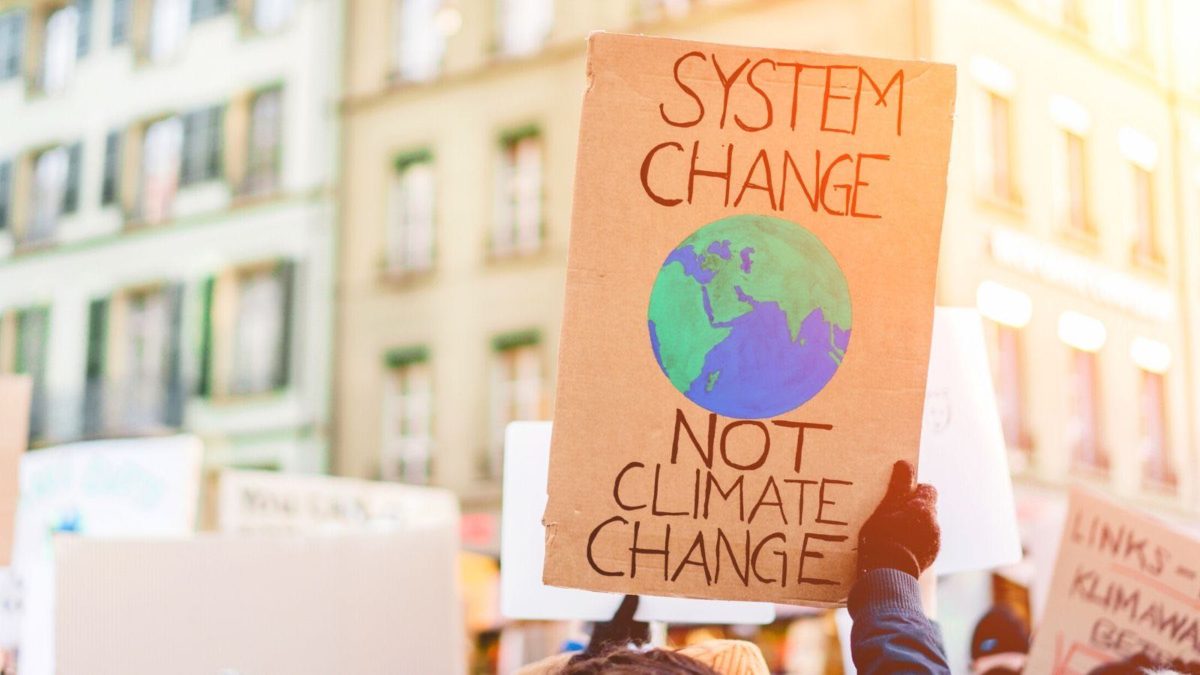Palm oil products have become synonymous with destruction. But how did it get this way? And can the “sustainable” option really provide a viable alternative?
This controversial topic is one that we should all be aware of. As most of us are indirectly contributing to the problem (more than we would like to admit). Find out what makes palm oil products one of the biggest issues of our time.
Table of Contents
What are Palm Oil Products?
Palm oil has been apart of human society for thousands of years. So why now, in these last 20 years, have things taken such a radical turn?
To understand the issue you really need to start from the beginning. Here are the facts and highlights you need to know.
What is Palm Oil?
- Palm Oil is extracted from a fleshy nut that grows in bundles on the tree
- The type of palm tree used originally came from Africa
- Two types of palm oil produced (red – from fruit, clear – from the fruit’s kernel oil)
- Originally sparked global interest during the Industrial Revolution where it was used for a machine lubricant
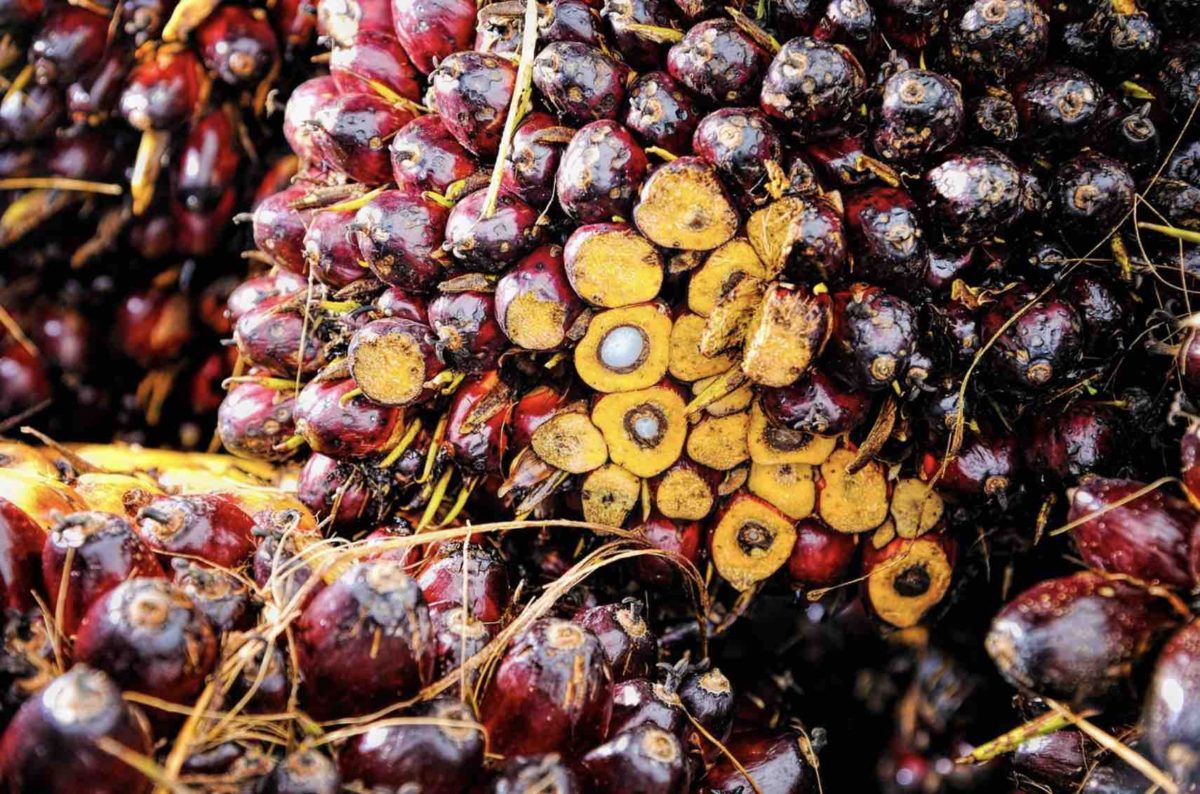
Why is Palm Oil Used?
In Food & Products
- The oil is high in saturated fat
- It is cheaper to produce than animal fats (milk, butter)
- Gives products longer shelf-life (doesn’t oxidise)
- Stable at high temperatures (keep fired food crispy)
- Colorless and odorless once refined
In (Bio)Fuels
- Palm Oil can be turned into a Biodiesel (fuel)
- All vegetable can
- Biodiesel is marketed as the green option
- The Biodiesel used in transport (gas stations, planes, trains) is actually a blend
- In most cases only about 10% or less of biodiesel is used, the rest is fossil fuels
How is Palm Oil Refined?
The fruit is collected (by hand) and delivered to the refinery, where it is ground up. The liquid is separated using fractioning (a melting process), and impurities are removed. It is then bleached to become clear.
How many kilograms of fruit are needed for 1 Kg of Palm Oil?
It depends on the plantation, the season, the refining equipment, etc. But Palm oil is generally considered a high yield crop which is why it is so popular.
- Approximately 20% of the palm fruit is converted into usable oil. Each palm tree produces around 13kg of fruit per year.
- Roughly 2.6kg (5.7 Pounds) of palm oil or 2.9L (12 cups) per year, per tree
How much is produced per area?
- The average yield for industrial-scale oil palm is about 3,700 kilograms of oil per hectare/per year
- Small holders produce less, between 200 and 2,000 kilograms per hectare.
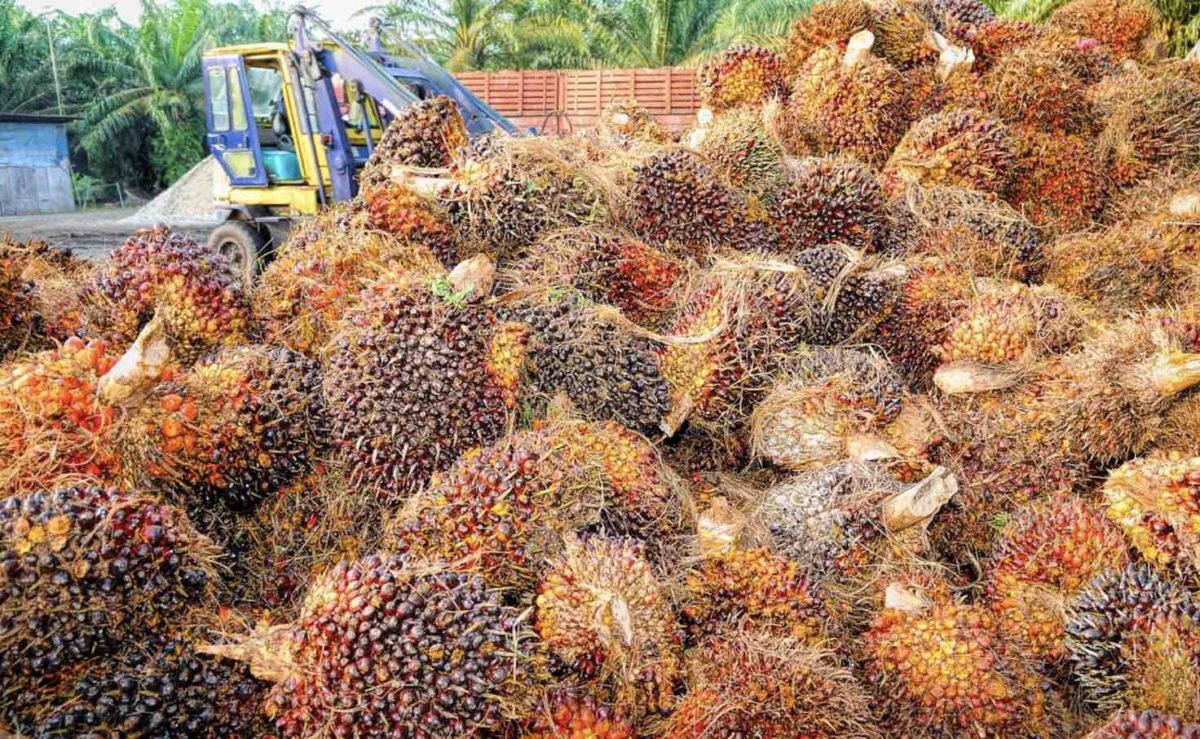
Where does palm oil come from?
The palms grow in tropical regions around the equator. 85% of Palm Oil comes from Malaysia and Indonesia. Rubber was once the key export of Malaysia, but rubber prices dropped and the government gave tax breaks to the new interest in palm oil industry.
Is palm oil the most destructive crop?
Is palm oil destructive? Yes. It is wiping out vast areas of highly dense rainforest on a daily basis. If you’re looking at the amount of land converted from forests into crop/fields, it is still not the worst.
The livestock industry is still destroying more rainforest to make room for cattle and cattle feed than any other crop industry.
Annual tropical forest loss in hectares
The following data is from the IUNC 2018 report:
- Cattle Farming – 2.7M
- Soya Bean – 480,000
- Timber & Pulp – 380,000
- Palm – 270,000
What kinds of products contain Palm Oil?
Palm oil is everywhere! Approximately 50% of packaged foods contain palm oil and up to 70% of personal care products!
Common Palm Oil Products Include
- Packaged Bread
- Crackers
- Spreads
- Chocolate
- Cosmetics
- Detergents
- Soap
- Instant noodles
- Cleaning products
- Ice cream
Palm Oil Names
Not only is palm oil in so many of the products we use daily, it is being masked by different names. Out of sight out of mind. These are some of the terms that are used to hide palm oil in your products:
- Vegetable Oil
- Vegetable Fat
- Palm Kernel
- Palmate
- Palmitate
- Palmolein
- Glyceryl
- Stearate
- Stearic Acid
- Elaeis Guineensis
- Palmitic Acid
- Palm Stearine
- Palmitoyl Oxostearamide
- Sodium Laureth Sulfate
- Sodium Lauryl Sulfate
- Palmitoyl Tetrapeptide-3
- Sodium Kernelate
- Sodium Palm Kernelate
- Hyrated Palm Glycerides
- Sodium Lauryl Lactylate/Sulphate
- Etyl Palmitate
- Octyl Palmitate
- Palmityl Alcohol
Where are Palm Oil Products Made?
Palm oil is sold as a commodity around the globe and used by various brands. These brands produce products of all descriptions. While many products are still made in China, countries around the world are producing palm oil products.
Companies with palm oil products
There is a long list of companies using palm oil products, however, some big names include:
- Dairy Gold
- Nestle
- Hersheys
- Domino’s Pizza
- L’Occitane
- Revlon
- Head and Shoulders
There are also a lot of smaller companies using palm oil too. The point is, it is all around us.
Why do so many companies use palm oil in their products?
In most cases, it reduces the product cost. This is actually driven by consumers.
Palm Oil Sales
Palm oil plays a huge role in the global economy. It is Indonesia’s second-biggest export and made $20 Billion in revenue in 2018.
The top buyers of Indonesia’s palm oil are:
- India
- European Union
- China
Things might change with the EU’s recent reviews of their sustainable objectives.
Last year the UK supermarket company “Iceland” made a pledge to remove palm oil from its own food brand by the end of 2018. Unable to achieve this the company removed its brand from the food instead of the oil.
The sale of palm oil globally continues to rise as more and more demand for products increases.
Palm oil is ingrained in our society on so many levels. It will take huge changes in consumer demand to reduce global sales.

Certified Sustainable Palm Oil
In 2004 the World Wildlife Federation (WWF) began a “roundtable” discussion on the sustainability of the palm oil industry.
Over the years, it has grown into an organisation that now certifies farms and refineries based on their sustainable practices.
But, can we have truly sustainable palm oil?
As the demand for palm oil products continues to rise, can it really be produced in a sustainable way?
How do we define sustainable?
In terms of a product like palm oil, sustainability refers to maintaining yield.
With the introduction of conservation groups and global discussion, sustainability has taken on a new role. It considers the environment, the social aspect, even some morality.
With the increasing human population, the increase in the demand for food etc, can any kind of mass production really be done in an environmentally sustainable way?
What does certification mean?
The Round Table on Sustainable Palm Oil (RSPO Certification) has developed a supply chain sustainable management plan.
The palm oil product supply chain includes:
- Plantation / Farm
- Collection & Transport
- Mill
- Collection Port (for international shipping [export/import])
- Refineries
- Product Manufactures
There is a huge amount of work that goes into turning a palm kernel into a product. Creating regulations for each of these steps is essential to maintain a level of integrity throughout.
That is all well and good for the palm oil farms that have already been setup. Systems can be put in place to ensure efficient production, low impact transport, etc.
But what about the new plantations? The new farms that will be created in the forests?
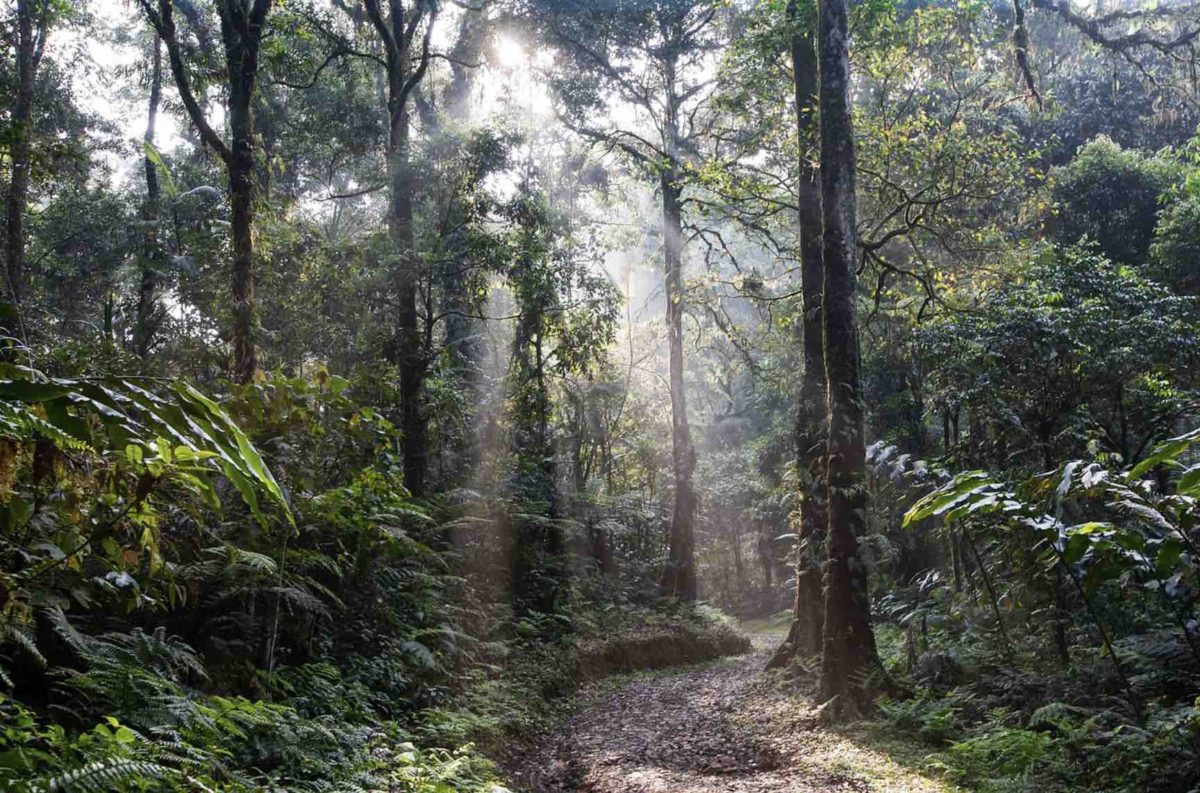
Creating new plantations sustainably?
Assessments must be conducted before a new plantation can be created. These must be done by nominated, certifying bodies and cover the following:
- Environmental and social impact
- High conservation value
- Land use change
- Soil suitability
- Greenhouse gas
The public is allowed to comment on the proposed plantation plan for 30 days prior to works.
Internal assessment of space
If a grower is creating a plantation under 500 Hectares (ha) they can do the assessment internally. Otherwise, independent assessors are required.
How big is 500ha? That’s 500 football/rugby fields of forest that can be assessed internally.
How many orangutans can live within 500 football fields?
The average orangutan density of Sumatra (25 ha/animal) and Borneo (44 ha/animal).
If a new plantation was proposed for following locations, there could be displacement of a lot of orangutans (with only the growers themselves conducting the assessment) .
- Sumatra – approx. 20 displaced orangutans
- Borneo – approx. 11 displaced orangutans

Realtime scale of habitation loss
In Indonesia alone, 146 football/rugby pitches of rainforests are lost every hour.
If one of those hours was in Sumatra, it could displace up to 5 orangutans just in the hour. When you look at numbers like those you can see the real severity of the loss.
Certification of new land palm oil
Unfortunately, the sustainable certification’s complicated supply chain assessments means that there is a lot of room for misconducted and manipulation.
To be labeled as sustainable only 1% of the oil has to come from a plantation that has been setup and certified. This means 99% can come from a newly deforested plantation.
There are claims (Science of the Total Environment journal) that one way to get around the certification is to first cut the forest for use as a wood plantation. Next, convert the wood plantain into a traditional palm oil plantation, and then upgrade to a “certified” one.
Palm Oil Environmental Effects
Clearing rainforests for land
Because the rainforests in Malaysia and Indonesia are so thick and on peat land they release 100 times the greenhouse gas of conventional forest fires when they are burnt to clear.
The loss of the thick foliage is reducing the trees ability to absorb carbon from the air and produce oxygen.
The follow on effects of the deforestation include:
- downstream water quality and freshwater species diversity,
- invasive species associated with oil palm,
- pest-spillover effects,
- secondary impacts of hunting
Biodiversity loss
The biodiversity loss from virgin rainforest is immeasurable. While estimations can be made on the number of species lost per hectare, the role that each one plays in our planet’s connectivity is unknown.

Are palm oil plantations the main cause of orangutan deaths?
While deforestation and human interaction is having a significant role in the decline of the orangutan population, research shows that the populations were decreasing prior to the deforestation.
It states that approximately half of the 1,500 – 2,500 orangutans killed in Borneo each year are by local hunters.
It’s likely that deforestation is making it easier for hunters to find the orangutans. If they are being displaced and travelling towards populated villages then deforestation still plays a vital role in the killing.
How may more orangutans are there?
It is hard to say for certain but numbers are estimated between 50,000-65,000 orangutans left in the wild.
Currently, about 10,000 orangutangs are found in undeveloped forest areas within oil palm concessions held by companies that have not
been certified by the Roundtable on Sustainable Palm Oil. Companies holding these licenses can legally clear these forests, as long as they do not kill protected species, such as orangutans in the process.
While they may not directly kill the animals, they will likely make it easier for hunters & poachers.
It’s not just orangutan under threat
There has been a huge loss to species through the deforestation process however some, in particular, are on the verge of extinction:
- The Malaysian Sun Bear
- Tigers
- Gibbons
193 animals and plants included in the IUCN’s Red List of endangered species.
Sustainable Palm Oil and the European Union
In March 2019, the European Commission has officially classified palm oil as unsustainable.
The EU issued a ruling that would exclude most palm oil from being used in green transportation fuel by 2030 due to the damage it causes to the environment.
However, this is a controversial issue and one that is being fought by the Malaysian & Indonesian governments in what is being called “Palm Oil Discrimination”.
“The claims made by the EU Commission that the delegated act is based on scientific and environmental grounds do not bear close scrutiny. Among others, soybean oil from selective sources has been categorized as low-risk ILUC, despite the EU’s own in-house research concluding that soybean is responsible for far more ‘imported deforestation,'” Jokowi and Mahathir (Indonesian President & Malaysian Prime Minister) wrote.
The European Commission said it would review Malaysia and Indonesia’s claims for a revision in 2023.
So, is sustainable palm oil really sustainable?
Based on the available data, no.
At the increasing demand rate, the drive for more palm oil products is creating the need for more volume. This means more plantations.
Using the current model (clearing rainforests to build farms), this method is not sustainable (biodiversity or carbon footprint)
Is buying sustainable palm oil products better than non sustainable?
While the RSPO symbol of sustainable palm oil is a positive step towards creating a sustainable palm oil industry. It is far from perfect.
Saying that, is it better to have a product that is a little bit sustainable as oppose to not at all? Sure.
But we shouldn’t get comfortable with the symbol as a morally superhero choice.
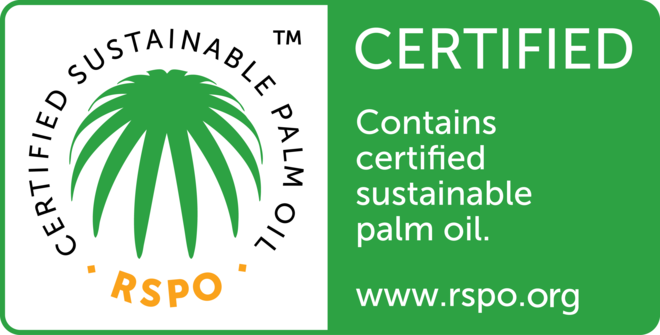
The future of sustainable palm oil
What could be done in the future?
Mass plantations would need to move away from areas of high conservation value.
There are vast land masses of desert that have the potential to change.
With projects like The Great Green Wall in the African proving that it is possible to create green space. Deserts do have their own unique species and therefore habitat loss would be unavoidable.
However, the sustainability of one, single product is reliant on the sustainability of all things along the supply chain. For example, if we are using fossil fuels to transport the product long distances from remote deserts it may not fix our greenhouse gas issue.
There would be a lot of work to sufficiently water the crops, but as solar powered pumps and AI run systems take over traditional farming methods, it could be a solution.
But that is not happening right now (or likely anytime soon). So, in the meantime can we boycott palm oil products altogether?
Is boycotting palm oil products the solution?
When you look at boycotting a product like palm oil, you really see how connected everything in our world really is.
For every action there will be a reaction. If the mass demand of the planet shifted from palm oil to another type of oil, things would change dramatically, and not necessarily for the best.
Palm oil is a highly effective crop
One of the main reasons that palm oil has been so widely used & produced at such a low cost is its growth efficiency.
The palms can grow and produce fruit all year-round in soils that other vegetable oil plants can’t.
The amount of oil produced per area of plantation is much higher than any other vegetable oil.
- 5 times more than rapeseed oil
- 6 times more than sunflower
- 8 times more produced than soya beans
New oil palm varieties such as this Australia-grown variety produce increasingly high yields, up to 10,500 kilograms of oil per hectare (almost 5 times that grown in Indoneasia).
“Half of the world’s population uses palm oil in food, and if we ban or boycott it, other, more land-hungry oils will likely take its place,” IUCN director general Inger Andersen said in a press release.
Switching to other vegetable oils may cause more deforestation and damage
Unfortunately, it’s not as easy as switching to a non palm oil alternative.
As other vegetable oils required hugely greater areas of land to produce the same amount of product, more land will be deforested.
For example if we were to stop making palm oil tomorrow and focus only on sunflower oil much more forest would be destroyed.
- To meet the current demand of vegetable oil using Palm – 270,000 hectares are cleared per year
- To meet the same demand switching to sunflower oil – 1.6Million hectares would need to be cleared
Can we stop making vegetable oil plantations in forests?
There has been some studies and even real world trials of palm oil plantations moving to the savannahs of Africa.
There is much less “forest” to destroy, however, savannahs do have their own unique biodiversity and cultural heritage.
It is also proving that the yield from the savannahs is much less that those from the forest areas due to weather & soil conditions. This means that much larger areas would need to be turned into plantations to meet the global demand.
There are still a lot of gaps in the data that need to be addressed. However, this does remain one potential solution.
Palm Oil Product Alternatives
The breakdown of palm oil products from total supply is estimated as follows:
- 70% – Food Products (Processed foods, etc.)
- 25% – Consumer Products (soaps, candles, cosmetics, etc.)
- 5% – Fuel (Biodiesel, electricity, heating, etc.)
Knowing this, the biggest area that we can address is food.
There has been more talk about palm oil free products in the media lately. But what are they? And what do they use as an alternative?
There are actually a lot of brands making palm oil free products across a wide range of consumer goods.
The best way to shop is to do your research before hand
As per the list of alternative names for palm oil mentioned earlier, there are a lot. Too many to search through every product and every name when shopping.
If you really want a spread that is palm oil free, look them up before you go shopping and pick up that specific one. Use the list mentioned above or learn how to eco shop.
Avoid packaged goods and make things at home
Palm oil foods are generally processed or packaged. While this is much more convenient than making the food product from scratch it is adding to the global issue of deforestation.
Packaged foods are also (in general) wrapped or boxed in plastic. In the EU (2016) there was 16.3 Million tonnes of plastic wrapping waste from packaged food in one year. Let’s say no to plastic!
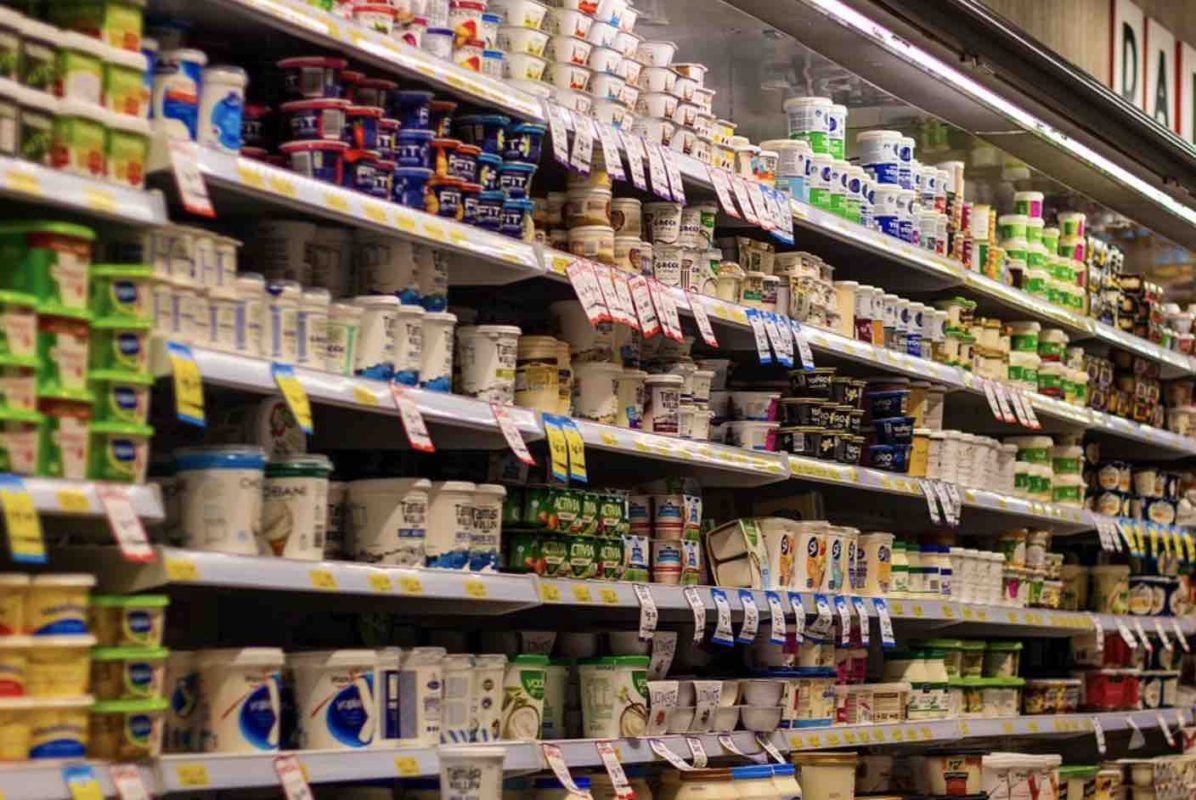
An easy example is peanut butter
One of the most basic spreads that can be made at home instead of store-bought is peanut butter.
Store bought options often have vegetable oil, preservatives, sugar, etc.
All you need to do to make peanut butter at home is to simply put peanuts into a food processor/blender and blend them. There is enough natural oil in the nuts to blend into a paste.
Try out one of the palm oil free recipes!
Summary & Thoughts on Palm Oil Products
It’s a complicated story.
Palm oil products are everywhere. It’s because palm oil is:
- Cheap to produce
- Easy to store
- Great source of calories
- Produces a large amount of oil for relatively small amount of space
The issue is that it is causing significant destruction.
Palm oil get’s a lot of attention because we can relate
Rainforest clearing for palm oil gets a lot of attention. In reality, the amount of forests cleared for the cattle industry is ten times worse.
A big part of the anti palm oil story comes from the orangutan.
They are so humanlike. In fact the name “orangutan” translated to English is actually “people of the forest”.
When people see images of orangutan in stressful/painful situations they can relate (more so than the Malaysian Sun Bear or other species).
We really need more people to relate all deforestation
It is somewhat hard to imagine or feel the same kind of connection to a rare bird species in the Brazilian jungle. Which is a shame. But that’s just the way it is.
Choose sustainable palm oil products?
Our current situation (clearing rainforests to grow vegetable oils) is not sustainable. The certified sustainable palm oil label is a great idea in theory, but is far from reliable at this point.
So, while sustainable technically is an option to look for when purchasing, it’s really not.
Avoid palm oil products?
Should we boycott palm oil products all together?
Food
The main food products using palm oil are:
- crackers
- chips
- chocolate
- ice cream
- packaged bread
When you look at that list, it wouldn’t hurt to cut back anyway. Substituting packaged/processed food for more fresh foods.
This means more preparation time in collecting and preparing the food.
On a global scale, is that going to hinder our productivity? Having more people spend more time on food preparation? Well, think about the quality of food that they will be eating. Overall it’s likely to be better for our health and therefore productivity.
Consumer Products
In this case it really is easier to buy a block of soap over making one. But can you choose a palm oil free option? Yes. There are plenty out there.
The issue is when the globe decides overnight to avoid these palm oil products. There would be a huge spike in deforestation as producers quickly attempt to make up the volume from alternative vegetable oils.
The power really is in the people.
Companies make palm oil products, because consumers demand good, cheap products. But at what cost is it really?
While boycotting palm oil products is not the answer. It might be a step in the right direction.
It might cause real global change.
We need more research into producing palm oil in alternative locations.
It is a huge undertaking and who is going to pay for it? Ultimately the people through taxes. But these changes need to be made at the top.
Palm oil is one piece of the puzzle
With the big issues being over population and global warming, palm oil products are just one of the many pieces contributing.
In summary,
- sustainable palm oil is not a real thing
- we can’t keep going the way things are
- boycotting palm oil products is not a solution, but may create enough buzz to make some big decisions at the top
- more research is needed into creating palm oil in alternative locations
- taking away the palm oil industry from Indonesia/Malaysia will have huge economical repercussions (population of Indonesia is 260 Million)
- try eating more fresh food and less packaged food
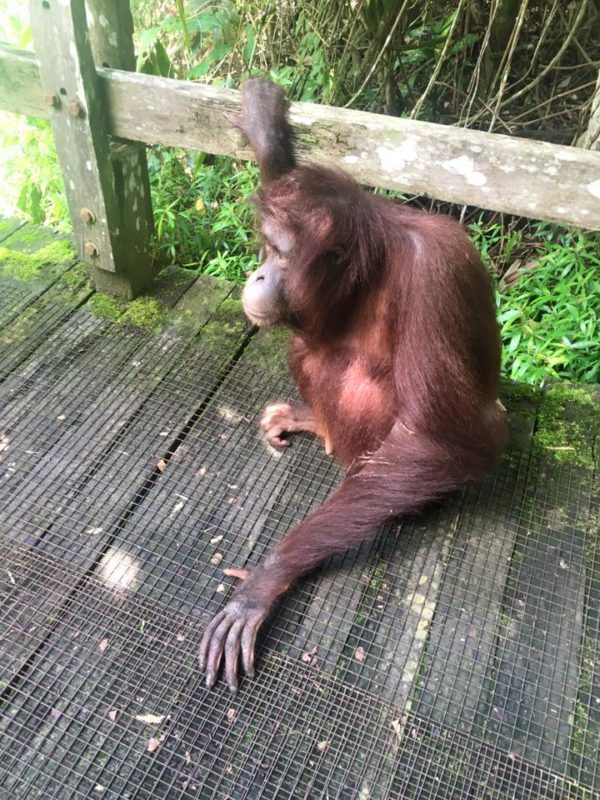
Personal Experience
Growing up in Malaysia we had real issues with the “smog” caused by huge burning forest fires in Indonesia. So much so that our school closed out of safety concerns.
The smog is not only taxing on the environment, but on people
Travelling to Borneo and seeing the miles upon miles of palm oil plantains was very disheartening. But not as much as seeing the orangutan in the sanctuaries.
They really are so human like are very relatable.
Just be sure to be aware of animal tourism and make sure that the orangutan’s best interests is really there.

